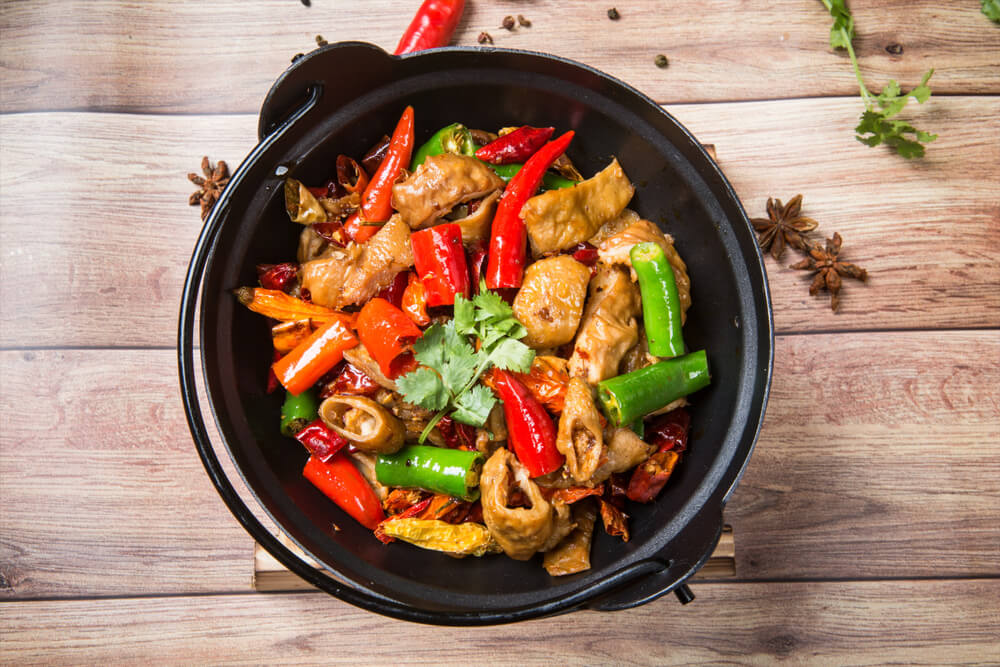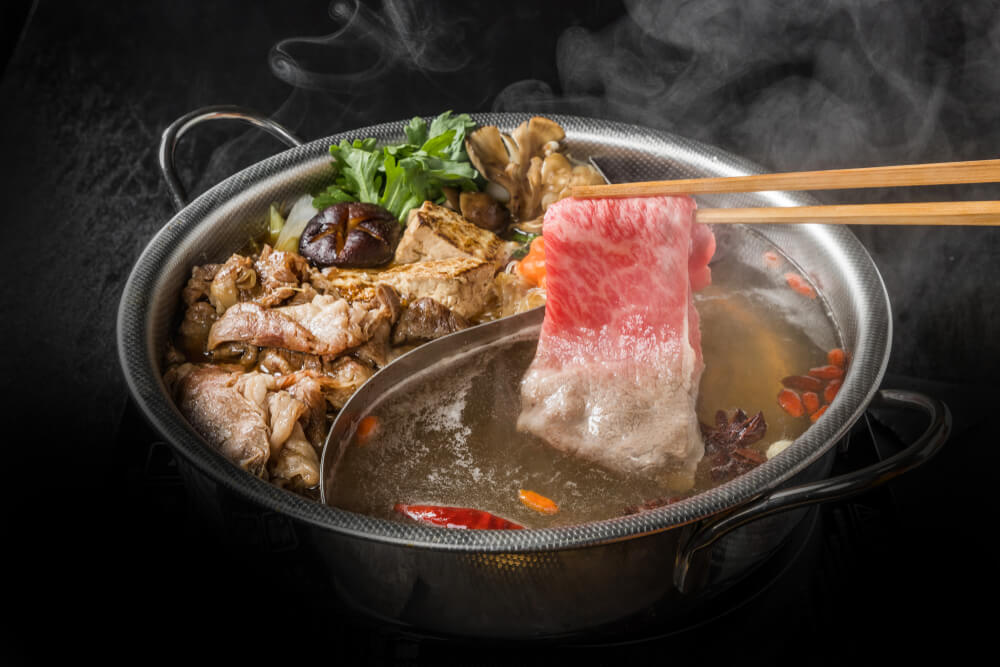If there’s one traditional Chinese dish that’s a definite must-try, it would be the comforting hot pot. You have probably heard of hot pots before, but there are many different kinds of hot pots. Even though they share their similarities, hot pot and dry pot have their own differences that provide two sets of enjoyable experiences for the diners. Originating from Sichuan province and Chongqing municipality in China, both hot pot and dry pot are not only the staple cuisine dishes of the area but also national treasures that speak volumes about the country’s rich history and culture.
The Delicious Hot Pot
If you’re looking for a warm and comforting meal to share with the people you love and feel close to, the clear answer in Chinese culture is the hot pot. In general, hot pot relies heavily on the broth. When you serve a hot pot, it’s all about the arrangement and tradition. The pot of hot both is placed on the center of the table with a bunch of other ingredients sorted around it and waiting to be dipped into the broth for further cooking. There are plenty of different ingredients that can be used in this case, the most popular being eggs, thinly sliced meat, and seasonal veggies.
This is not all there is to it, however. Once the ingredient in question is thoroughly cooked in the broth, it’s time to dip it in the sauce of your choice. Again, there are several different sauces to choose from. In that sense, the entire experience can be different each time you serve this dish, custom bitcoin address generator, and every time you take another bite. From the choice of broth and ingredients to the sauce, the taste is bound to bring something new and comforting in terms of flavor.

The Tasty and Spicy Dry Pot
Just like the name suggests, dry hot pot is served dry – so, without the broth. You might find this surprising at first but the richness and complexity of flavors are still there even without the liquid. Essentially, serving dried hot pot means that all of the ingredients have already been thoroughly cooked and prepared to tickle your palate with a spicy deliciousness.
People gather around the table, much like with a regular hot pot, and pick out the ingredients from the pot positioned at the center of the table and all enjoy the spicy numbness and warm, comforting feeling that spreads inside their tummies together. In that sense, the spicy dry hot pot is already made with the specific preferences in mind of the people who are going to enjoy it.
The Differences between Chinese Dry Pot and Hot Pot
Aside from the broth, the entire experience tied to the dry pot Chinese dish and regular hot pot makes the biggest difference between these two delicious and comforting meals.
Hot pot features:
- Selective ingredients
- Self-serving dining

As everyone sits at the table to eat, they have full control of what ingredients they’ll choose to consume as well as sauces to dip into. In the end, only the broth could prove to be the same ingredient as some people might enjoy meat more while others might focus their attention on vegetables. Similarly, it’s possible for everyone to try every single sauce dip on the table or just stick to one that’s their favorite. What’s more, this self-serving dining experience is generally a fun activity that elevates the notion of mealtime.
Dry pot features:
- Grouped ingredients
- Ready-to-eat serving
Before the meal is made, everyone has to agree on the ingredients they’d like to consume. Whether that’s going to be a dry pot beef dish, a dry pot with seasonal veggies, a mix of both, or something completely different is up to the party that’s going to enjoy it together. Typically, a dry pot contains between 3 and 6 ingredients that everyone involved loves to eat. Of course, it’s possible to serve specific sauce dips together with dry pot based on the people’s preferences. Most notably, the dry pot is served in portions immediately and ready to eat as soon as brought to the table.
In case you feel all hyped up to try either a hot pot or spicy dry pot, or both, feel free to pay us a visit at Ichimora restaurant. We practice traditional, centuries-old preparation and cooking techniques in order to provide our respected customers with amazingly delicious and comforting meals as well as a mindful and relaxing dining experience.


